Does coyote hunting affect deer survival? Should a deer hunter take that random coyote that runs past their stand to save a fawn next season? On the other hand, are the recreational coyote hunters helping to increase the area’s deer population around their hunting stands?
Coyote hunters have forever heard that they cannot use “protecting the herd” as a reason to preserve their legal right to predator hunt. And every day, more and more “scientific” articles are written and appear on the internet, “proving” coyote hunting doesn’t affect deer survival.
One article, in particular, a May 2021 PennState Extension piece, called the belief that “coyotes keep down the white-tailed deer population” a myth.
That’s a pretty strong claim, let’s examine it.
Coyote hunting and deer survival: Finding common ground.
PennState’s authors used several problematic studies to prove their point, explained the fawning season as a “predator swamping” tactic, claimed that fawns were hard for coyotes to find, and denied the damaging effect coyotes had on deer populations.
The problems with PennState’s article?
- It never acknowledges the numerous studies overwhelmingly proving coyote removal increased fawn/deer survival rates.
- The predator swamping it mentions is a defense tactic used only against specialist predators, but coyotes are generalists.
- There is not even a nod to the fact that coyotes are the undisputed apex predators of fawns (beating out even bears and bobcats).
This happens when there is no sharing of common ground between two opposing parties to a discussion. Instead, we get tricked by our own bias and only seem to recognize facts that support our belief.
However, the truth about the effects of coyotes on deer survival lies somewhere between the near slogan like statements: “Kill a coyote, save a fawn” and “Killing coyotes has zero effect on deer populations.”
Kill a coyote, save a fawn.
This statement is often made by deer hunters, especially those that have encountered the half-eaten remains of a large racked, trophy-sized buck lying in six inches of snow. The mind instantly paints an image of a majestic, healthy animal fleeing an innumerable pack of vicious coyotes.
Relentlessly pursued until exhausted, the buck makes a final stand in the cold winter air. The noble animal slashes with its antlers and kicks its rear legs in a vain effort to ward off its tormentors. Within minutes, a 50 pound Alpha male coyote has seized the buck’s throat in its jaws and dragged it to the ground.
The buck is then swarmed and torn to pieces.
It’s a mental movie that rivals anything Hollywood produces; however, it’s as factually inaccurate as the Disney movie Pocahontas. In reality, there were probably only two coyotes involved. The pair likely ambushed their prey to avoid a lengthy chase, and the buck was probably sick, injured, or elderly.
The actual killing would have looked exactly like this:
Coyotes survive on fawns, not does and bucks.
The truth is most male fawns (and female fawns, for that matter) don’t live long enough to become trophies. And a significant reason for fawn mortality is coyote predation.
In one study, coyotes killed 75% of the fawns born in a single spring. These fawns were healthy, defenseless, portable, and tasty.
So, while the deer hunter has a point, killing a competitor increases the odds of finding a full-grown buck during the deer hunting season; they are saving the fawns.
True or false: Coyote hunting has no effect on deer survival.
In the PennState article, the question asked is, is it accurate to say that deer hunters can “save the herd” by killing the coyotes the encounter during their deer hunts? PennState’s answer was a resounding no.
That’s fair to say. However, deer hunters don’t hunt at night (when coyotes are most active) and aren’t usually interested in giving away their location with a loud gunshot. So, it is also fair to say deer hunters do not kill not many coyotes in the first place.
But it’s also critical to note that fawning season and deer season are a good six months apart in most places. So, that dead coyote at the deer hunter’s feet—it wasn’t going to be eating any fawns for quite a while.
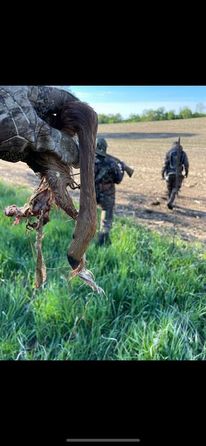
Does coyote hunting reduce enough coyotes to effect deer survival?
If we leave the deer hunter up in his tree stand for a bit, what should we make of the claim that coyote hunting and coyote hunters do not affect deer survival?
The problem with this claim is what’s really meant: “That killing coyote has no effect on coyote populations and is therefore pointless.”
If you mean, it’s impossible to exterminate every coyote, that’s 100% correct. We will never eliminate the coyote; however, that isn’t the goal of either the deer hunter or the coyote hunter. Coyotes have a purpose, both as scavengers and consumers of rodents. The hunter’s goal is to reduce the numbers of coyotes locally, which, as we will see, affects deer survival.
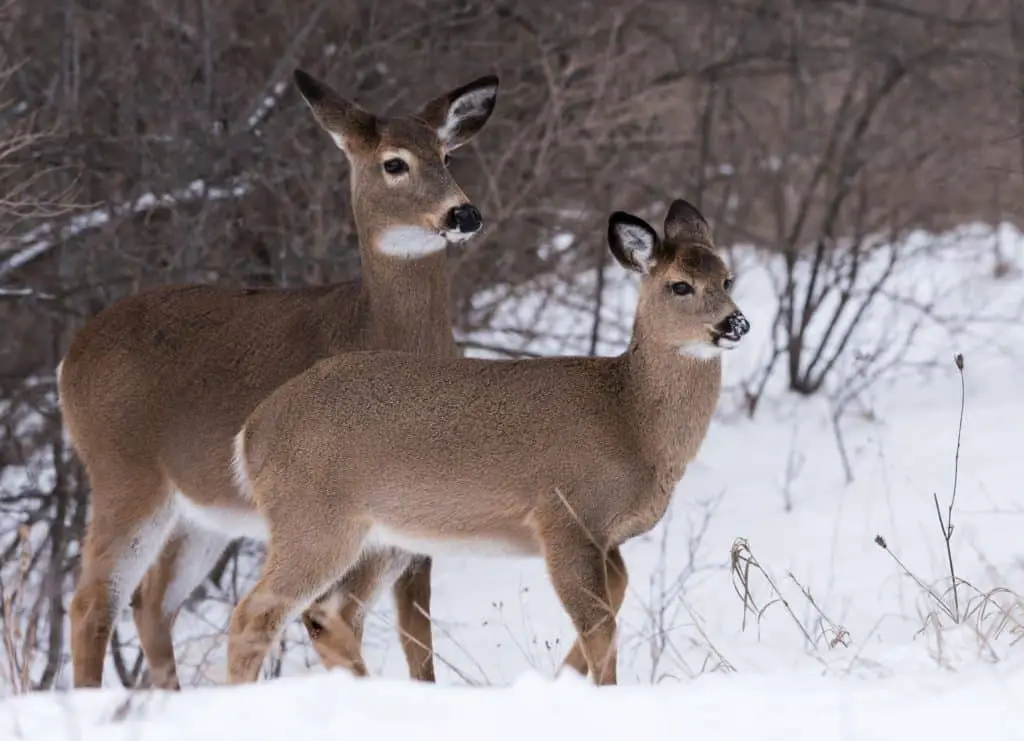
Related: Hunting eastern coyotes
Science, damned science, and statistics.
In PennState’s article, we find the following, “…one study looked at the deer populations in the Southeast and East Coast, which had recently been colonized by coyotes. If coyote predation was additive (detrimental) then deer populations would go down, but that is not what the study found.”
Assuming this was the study (listed in the article’s references), I’m not they get what these statements (also made in the report) mean:
“Our results indicate that the presence of more predator species in a system is not entirely additive (increase fawn mortality) in its effect on fawn survival.”
“Despite lower estimated per-individual kill rates, coyotes and black bears were the leading sources of fawn mortality because they had greater densities relative to bobcats and wolves.”
That’s researcher phraseology meaning that coyotes killed many fawns (because there are more of them), but they had to share it with bears and bobcats.
Please note: If you make a purchase from a link I provide, I receive a commission at no extra charge to you. Thanks for supporting my work!
The science of fawn and deer survival.
This study, done in 2012, found that “The effects of coyote predation on recruitment should be considered when setting harvest goals, regardless of whether local deer population size is currently above or below desired levels, because coyotes can substantially reduce fawn recruitment.” Meaning fewer fawns reach six months of age and can enter the herd.
Nearly ten years later, the authors followed up with this article, pointing out that the question of whether coyotes could affect southern deer populations had been answered in the intervening years.
“Since then, numerous field studies have shed light on, if not unequivocally answered, that question. Those studies, which have spanned the region in question, have been virtually unanimous in concluding that coyotes (Canis latrans) can indeed influence deer population dynamics through heavy predation pressure on neonate (fawn) deer.”
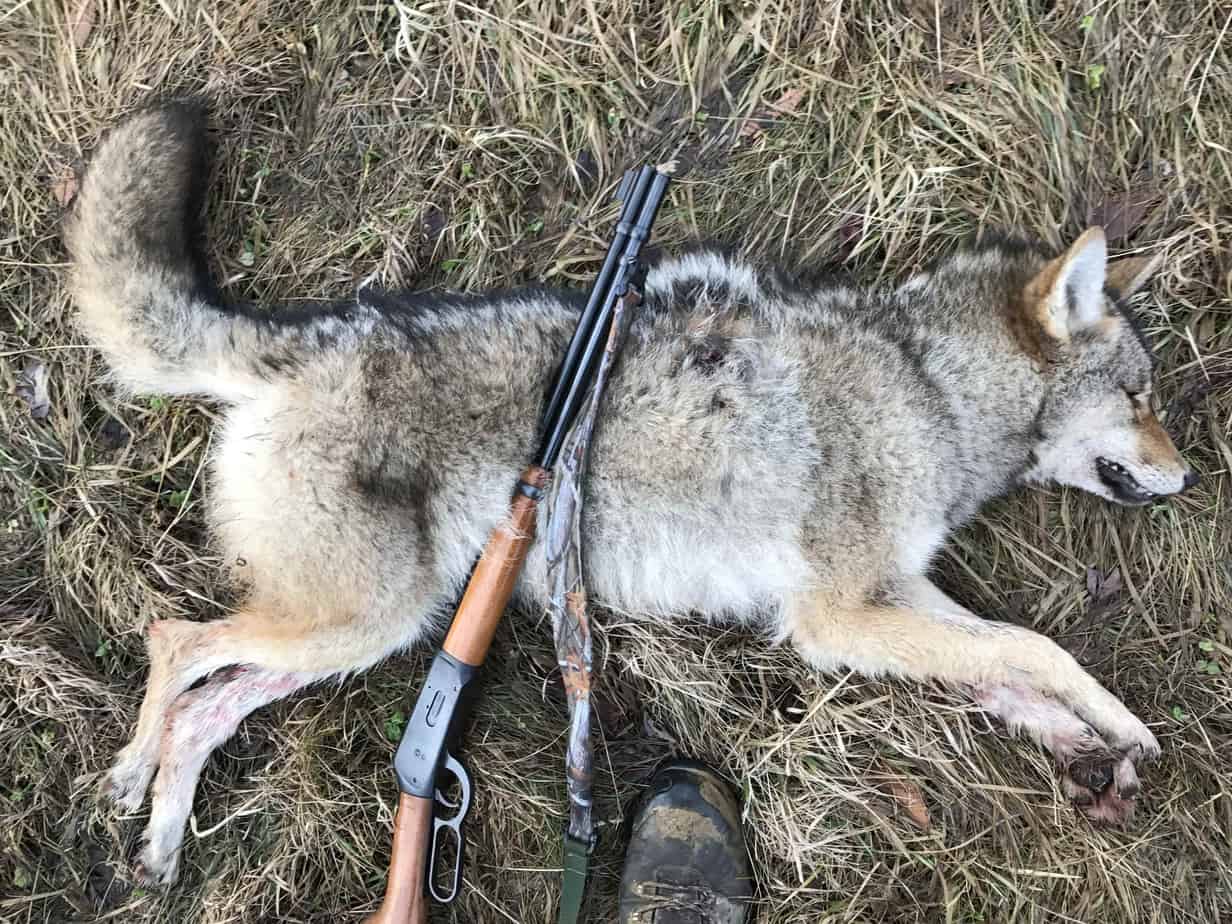
The damned science of coyote hunting and deer survival by trapping only.
In the PennState article’s list of references, a 2014 research piece titled Coyote Removal, Understory Cover, and Survival of White-Tailed Deer Neonates, PennState relies heavily on the conclusion that “When the objective is to increase the recruitment of white-tailed deer, we conclude that neither coyote control nor vegetation management appear effective.”
It does so while ignoring the article’s other finding that, “Based on our findings, coyote control (trapping only in this study) may not be a viable tool for most land managers in the eastern United States hoping to improve recruitment or increase deer population density.”
Simply put, the study relied solely on commercial trapping for coyote removal. While we will see that coyote trapping is superior to hunting, there’s a particular timing before it meets its maximum effectiveness. Outside that season, yes, it’s not worth the labor and fuel if it’s simply for deer herd support.
Deer survival in the “Functional Absence” of predators?
PennState also draws a nonexistent conclusion found in a research report written by a University of Delaware student working on his Master’s Degree in Wildlife Ecology. The 2018 report’s stated objectives for this research were “to (1) determine neonatal survival, (2) adult female spatial behavior, and (3) birth site selection in the absence of predators.”
While the report clearly states in its title that predators were absent, PennState seems to have not noticed this. Additionally, they may have skimmed over page 9, in which the author states: “I deployed 23 cameras across 12 adult and neonate capture properties, yielding a total of 9,379 photos over 1,186 trap nights. I observed no coyote, bobcat, or black bear during my predator camera sampling.”
The stated goal of the research was to determine neonatal survival, female spatial behavior, site selection in the absence of predators. However, PennState wrote, “A study in Delaware reported that only 45% of monitored fawns were still alive 90 days after birth, but not one of the monitored fawns was killed by predators.”
No deaths by coyotes, then? Well, not surprising as the researcher took extraordinary steps to determine there were no predators in his research area (I estimate he used at least $12,000 worth of trail cameras). By the way, in 2015, a total of 2 coyotes were killed during the Delaware coyote season. Coyotes are new to Delaware, with about 100 reported in 2014.
A swing and two myths.
PennState also floats two contradictory theories to support its thesis. That of “predator swamping” and the coyote’s extreme difficulty in locating the nearly scentless, perfectly camouflaged, and motionless fawns.
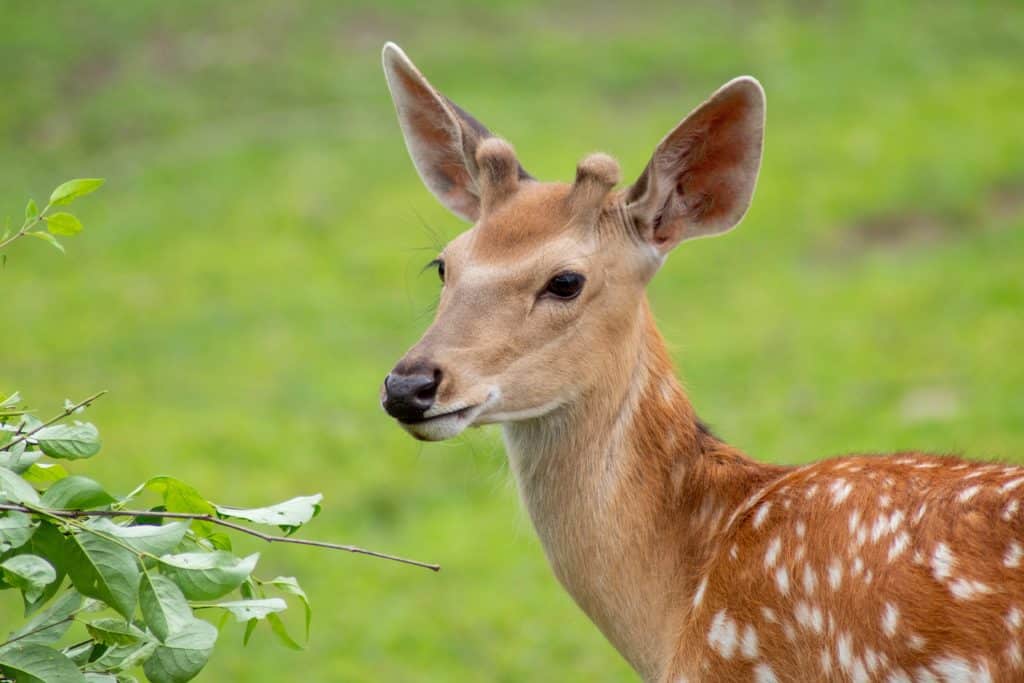
The myth of the invisible fawn.
Let’s start with the “almost scentless” claim made by PennState. At just a few days old, even fawns will urinate over their tarsal glands, creating a unique identifying scent to alert their mothers. Coyotes have been observed finding fawns by circling downwind of suspected bedding areas with their noses in the air. That “almost scentless” odor may be like the quality of beauty; it’s all in the nose of the beholder
And while fawns are well camouflaged and will remain motionless at the approach of a predator (as stated in the PennState article), coyotes remain excellent, prolific fawn killers.
According to this five-year study, “Predation (of fawns) was the leading cause of mortality in our study, and coyotes were responsible for the majority of predation events.”
Does the fawning season equal “predator swamping?
Predator swamping (as explained in the PennState article) is a defense mechanism used by deer to protect their fawns by having all the does drop their fawns at nearly the same time.
The idea? Well, according to the article’s authors, “By doing this, there are so many fawns on the landscape that predators cannot find and eat them all.”
It’s an interesting theory. Some crabs, fish, turtles, and even mast trees all release their offspring simultaneously. With the examples, I just noted their “swamped” predators do indeed have a shortened search time to locate fawns, and a group of prey is just as likely to avoid detection as a single individual.
However, there’s a severe problem with calling the fawning season a “predator swamping” technique. Female deer and fawns live in tiny family groups until the fawns are weaned and join the herd.
There’s also a fatal flaw with associating the fawning season with predator swamping: Predator swamping is a defense against specialist predators. Specialists have limited diets and stricter habitat requirements. A good example is the Canada Lynx. Due to its harsh habitat and restricted diet, it specializes in killing the one substantial prey available to it, the snowshoe hare.
Coyotes, having an unlimited diet and an unrestricted habitat, are generalist predators.
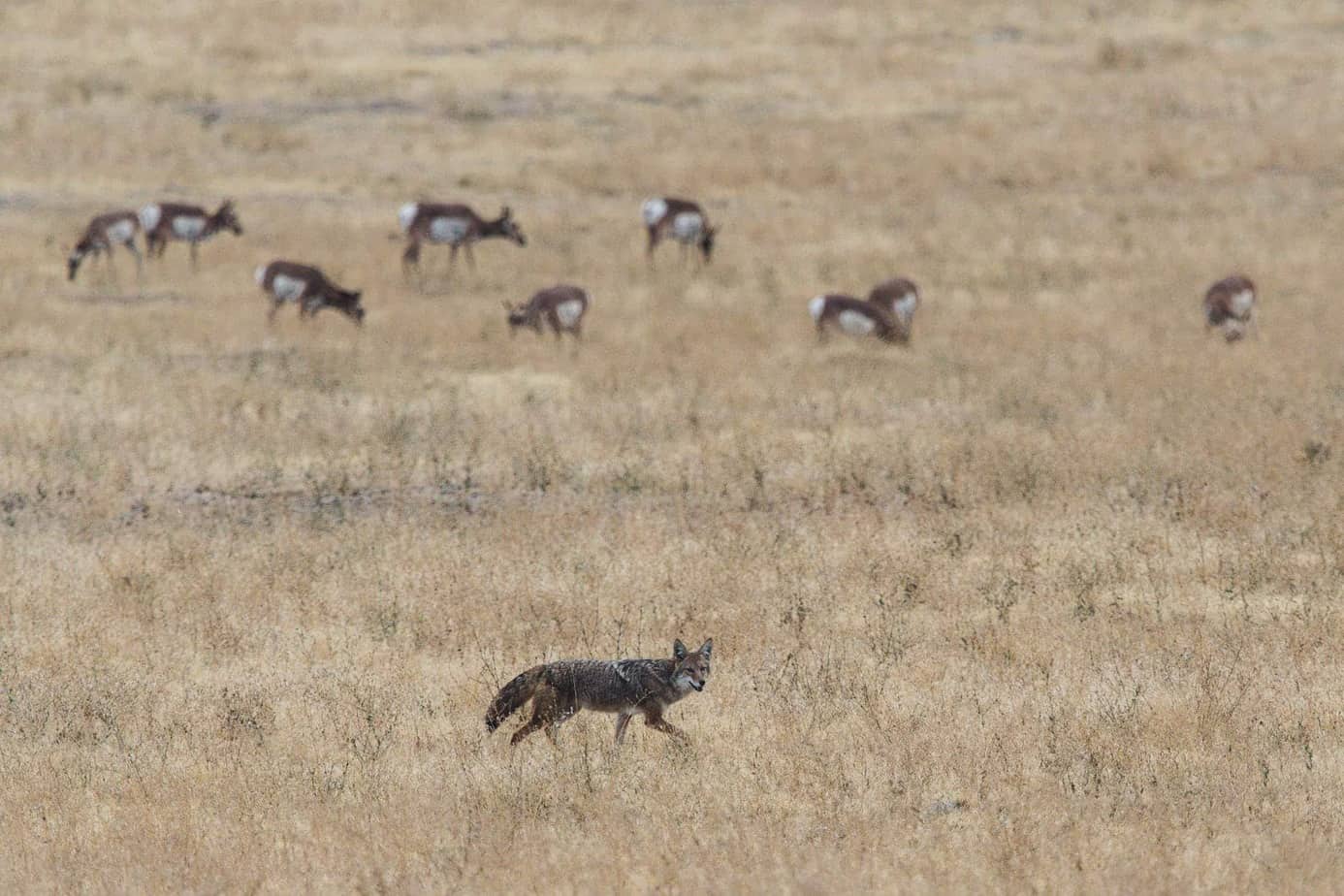
Does coyote hunting effect deer survival?
The scientific practice of predator removal (the intensive killing of predators in a specific area) to determine its effects on deer survival rates has long been a subject of potential value to wildlife biologists as a potential tool to increase fawn recruitment.
If your unfamiliar with how this is done (or to the amount of effort researchers put into this work), take a look at this study.
And fawn recruitment is declining across the United States. In 2021, only one state, Kentucky, reported a net gain of fawns. While biologists are attempting to discover all the factors influencing this decline, coyotes have long been recognized as a significant cause of fawn mortality.
Every deer hunter understands that the land’s carrying capacity, fawning cover, and (even if they don’t appreciate it) restricting the taking of mature does during hunting season increases the number of fawns that later join the herds in their area. But what effect does the deliberate removal of coyotes have on fawn recruitment?
State sponsored trapping and coyote hunting.
Way back in 1977, one of the first-ever studies to compare a “treated area” (an area where coyotes had deliberately been removed by trapping or shooting) to an “untreated area” was published. The researchers found that a “significantly higher number of fawns entering the winter period survived” in the treated areas than in the untreated area.
Since then, a host of other studies have reported similar findings. For example, one in southern Georgia in 2009 found that there were twice as many fawns per adult doe after coyote removal in the removal zone as in a similar non-removal site.
Admittedly, not every study determines that coyote removal is a miracle cure for declining fawn recruitment. Many cite the costs of hiring professional trappers, modest returns for the investment, and the coyote’s own ability to reproduce rapidly; however, none of the negative reports included recreational coyote hunting.
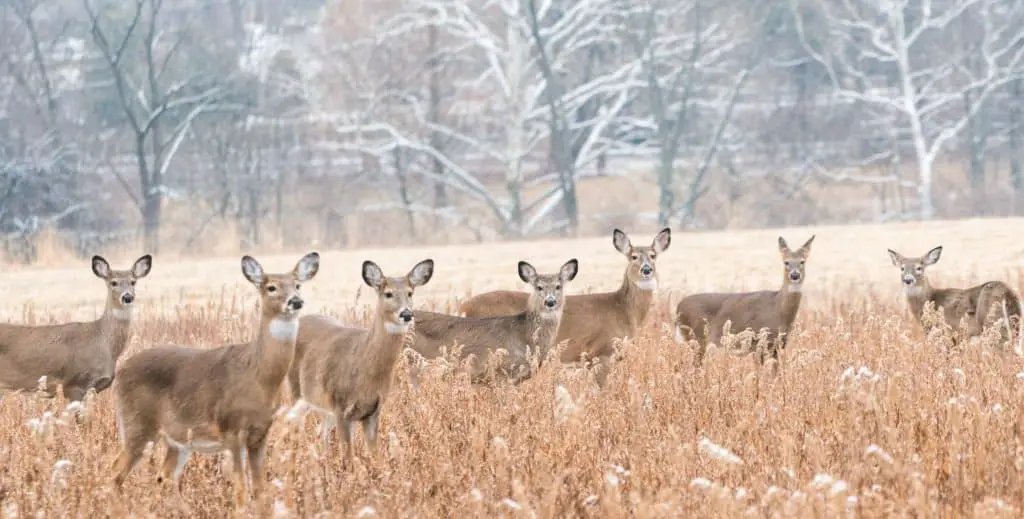
Recreational coyote hunting as an aid to deer survival.
Recreational coyote hunting (trapping and shooting) as a tool to aid deer survival is already gaining acceptance among many conservationists.
In 2016 the South Carolina Department of Natural Resources began awarding hunters who take specially tagged coyotes the chance to win a free lifetime hunting license. Each year, the SCDNR releases four previously trapped and tagged coyotes into every game zone. Any hunter who kills one and reports it wins a lifetime hunting license. The license is even transferable to a family member or friend.
That’s just enough of an incentive for a deer hunter to hit the pause button on their deer hunt and become a target of opportunity coyote hunter. And it’s working. The coyote population in South Carolina has decreased by 25%.
These studies suggest that killing the “dominate” or “alpha” pair (or even one of them) causes the other subordinate members of the “pack” to disperse, find mates, and reproduce. Some studies even insist that these busted-up “packs” cause juvenile coyotes to begin breeding at younger ages. More on myths like this later.
Does coyote hunting increase the coyote population?
This question has long been hotly debated.
An incredible number of studies claim coyotes reproduce earlier and faster when their social structure is disrupted.
These studies suggest that killing the “dominate” or “alpha” pair (or even one of them) causes the other subordinate members of the “pack” to disperse, find mates, and reproduce. Some studies even insist that these busted-up “packs” cause juvenile coyotes to begin breeding at younger ages.
The truth is coyotes do not live in packs; they live in family units. Therefore, using terms like “dominate” and “alpha” to describe the male and female parents is misleading. We could all avoid a lot of confusion, myths, and mistakes if we called them what they are, the mother and father of the litter.
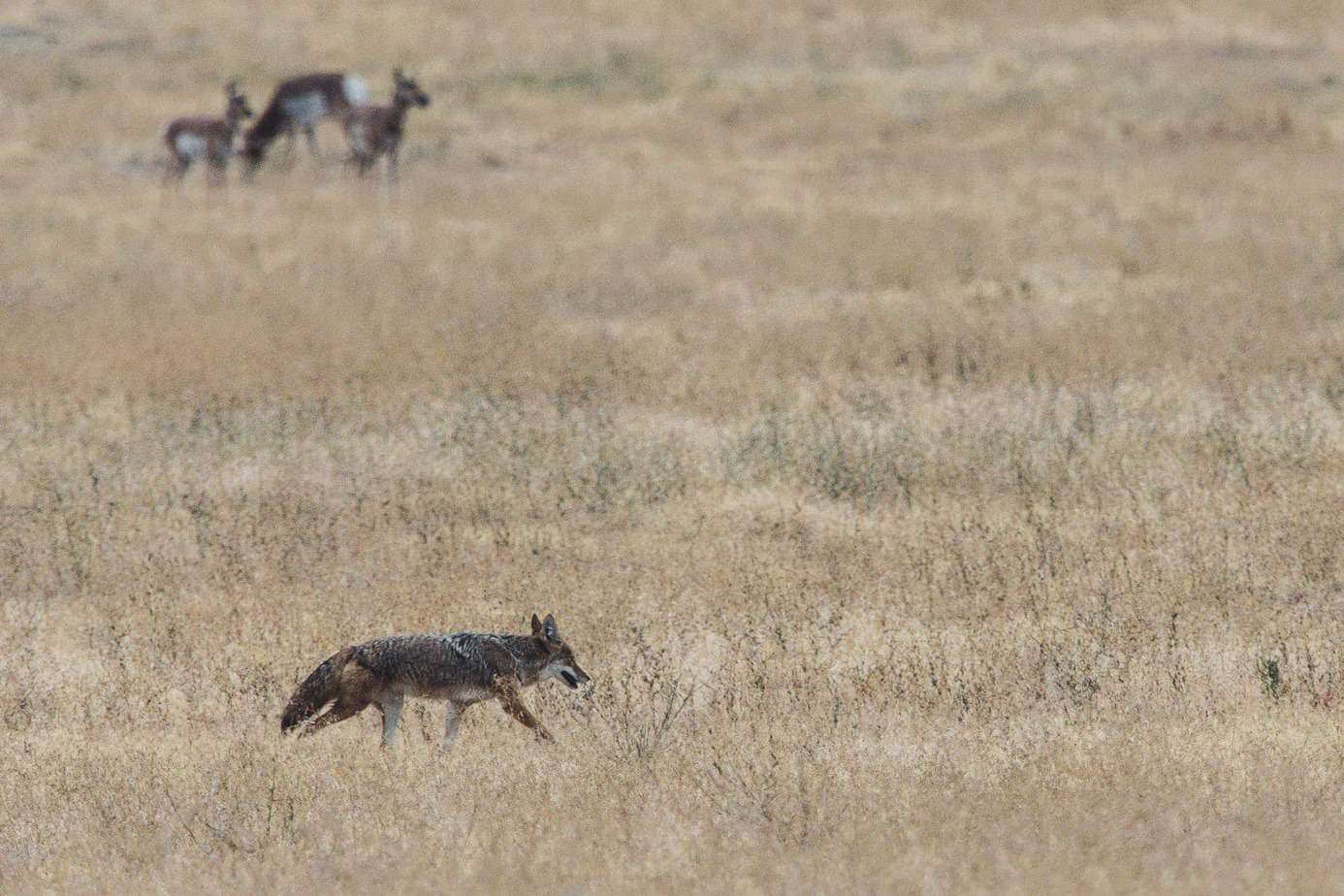
Some myths about coyote hunting.
- The claim that killing an “alpha” will cause the “pack” to break up and reproduce earlier than normal misses several points. A dead parent brings no more food to the den, decreasing the odds the litter will survive.
- Coyotes are monoestrous. The female coyote is only in heat for 2-5 days between January and March. If killed, her surviving pups cannot begin to reproduce until next year. If there is a female helper (a nonbreeding female from the previous litter who stays behind to help raise the next litter), she must find a mate during the next mating season before reproducing.
- Coyotes are territorial. Each year the surviving members are dispersed by their parents and forced to find new territory to call their own. The death of one or more parents decreases their risk of reaching this dispersal season, but it cannot cause early dispersal of underage pups.
- There has never been a single recording of a transient (a coyote with no established home range) female raising a litter, nor a pair of transients raising one.
The perfect coyote hunting time for deer survival.
As I said earlier, the truth about coyote hunting’s effect on deer survival resides somewhere between two extremes. We cannot exterminate every coyote, but nor can we throw up our hands and surrender.
However, we do have enough evidence to suggest a possible course of action that could help us address fawn recruitment declines in particular zones.
Coyote removal (both professional and recreational) through trapping and shooting, combined with incentives, will provide a temporary period of increased fawn recruitment. Additional registration fees could cover the cost of these incentives (and for professional assistance where needed).
Trapping of coyotes no earlier than 45 days before fawning begins has been shown to be best for saving fawns. As a result, additional incentives, awarded for specially tagged coyotes caught in traps within 45 of the onset of the local fawning season, could also be implemented.
A little honesty goes a long way.
It’s true; coyotes are amazingly resilient predators. Our efforts to remove them can only result in temporary gains; they must be repeated, studied, and modified. Those gains, however, will lead to improved deer survival rates, even if also short-term.
It’s also true that coyotes possess no magical powers or “secrets.” For example, they cannot change their natural behavior or modify their reproductive systems. Thus, under a sustained removal program, they have no real chance of success in a given area.
Your coyote hunting helps deer survival.
We should probably bring that deer hunter down from their stand and thank them.
The coyote they shot may have been a transient looking to establish a new family, but now it cannot. It may have been a parent tending to a litter of 10 pups; now, those pups will not be hunting fawns next year. That coyote may have even killed a dozen or more fawns next season, but those fawns will now get a second chance.
As for the dedicated and casual coyote hunters, hunting coyotes where you live means more fawns live long enough for the deer hunters to owe you their thanks.

